'Today' is the BBC's flagship morning news programme and the word 'Celtic' doesn't feature very often. It woke me today, introducing a piece on Hallowe'en (a Scots word for the Eve of All Saints Day) which derives from the Celtic Festival of Samhain (pronounced Sah-wen).
It was one of the four annual Celtic festivals, and probably the most significant as it launched the new year. Samhain also marked the start of the dark months and was a time to take stock of grain and cattle (how many beasts could the available food sustain through the winter?).
The Celts are first recorded in the Danube and Upper Rhone valleys; they spread to Gaul (present day France), then to Britain and Ireland in about 700 BC. The Roman and subsequent Angle/Saxon/Jute invasions of England confined the Celts to the corners of the British Isles, principally Ireland, Wales and Scotland. By accidents of geography and history, Celtic culture endured most visibly amongst the Highland Clans:
"When their enemies fall they cut off their heads and fasten them about the necks of their horses... striking up a song of victory... and fasten them by nails upon their houses."
Diodorus Circulous, writing of the Gauls circa 60 BC.
"The heads of the seven murderers were presented at the feet of the noble chief in Glengarry Castle after having been washed in this spring."
Inscription on the monument at the Well of the Seven Heads, Invergarry. The incident referred to was in 1663.
and again...
Having made preparation for sacrifice and a banquet beneath the trees, they bring thither two white bulls...Clad in a white robe the priest ascends the tree and cuts the mistletoe...He then kills the victims, praying that the god will render this gift propitious to those to whom he has granted it.
Pliny the Elder, writing circa 70 AD on the Provinces of Gaul..
In the 1670s bulls were still being sacrificed to pagan gods in the Highlands and the presbytery of Applecross, on the mainland opposite Skye, complained of 'abominable and heathenish practices'. Apparently men from Achnashellach had gathered in an ancient holy place...then killing a bull in an attempt to propitiate the gods.
Alistair Moffat, 'The Highland Clans'.
It all makes turnip lanterns seem quite innocent!
Subscribe to:
Post Comments (Atom)










































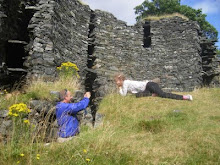
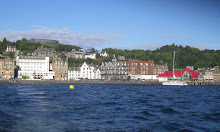
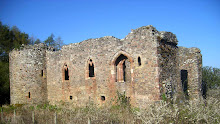
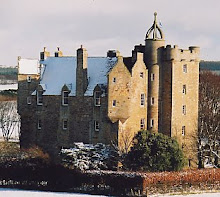
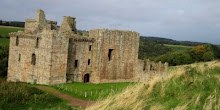

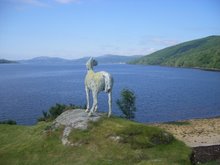

3 comments:
Alastair - Great post. In the crepe, glitter and commercialization, we obscure the roots of so many celebrations.
Now I can again start counting the months to Beltaine.
Thanks for this - fascinating area. In my homeland of Peebles we still celebrate Beltane with a 'Beltane Queen' and parade. But we still have Imbolc (31` Jan) to get through!
Aye, we wake up the Groundhogs for Imbolc, but there are a couple of genuine Beltane Festivals here in the Midwest - bonfires, dancing and all. Great fun and great way to welcome a new season.
Post a Comment